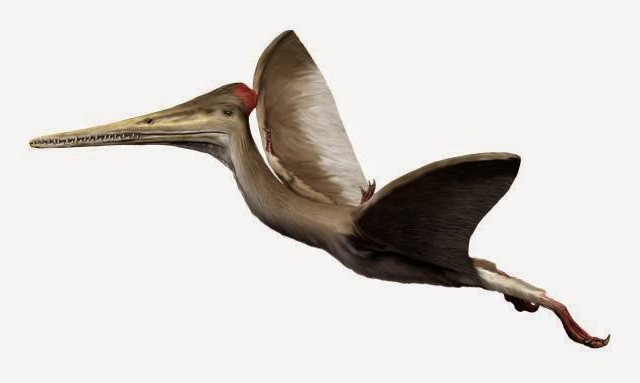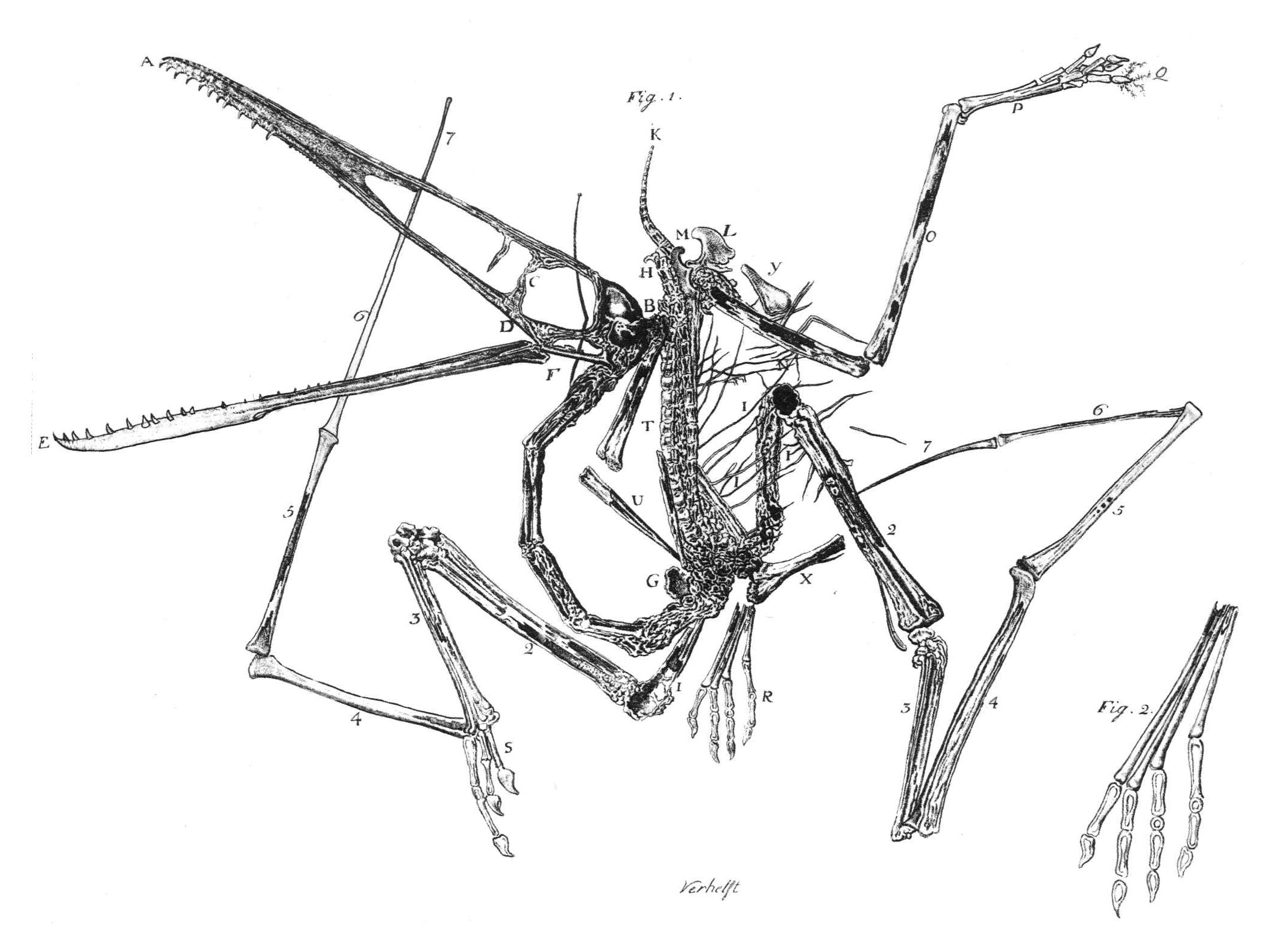|
Archaeopterodactyloid
Archaeopterodactyloidea (meaning "ancient Pterodactyloidea") is an extinct clade of pterodactyloid pterosaurs that lived from the middle Late Jurassic to the latest Early Cretaceous periods ( Kimmeridgian to Albian stages) of Africa, Asia, Europe and North America. It was named by Alexander Wilhelm Armin Kellner in 1996 File:1996 Events Collage.png, From left, clockwise: A Centennial Olympic Park bombing, bomb explodes at Centennial Olympic Park in Atlanta, set off by a radical Anti-abortion violence, anti-abortionist; The center fuel tank explodes on TWA Flight 8 ... as the group that contains '' Germanodactylus'', '' Pterodactylus'', the Ctenochasmatidae and the Gallodactylidae. In 2003, Kellner defined the clade as a node-based taxon consisting of the last common ancestor of ''Pterodactylus'', '' Ctenochasma'' and '' Gallodactylus'' and all its descendants. Although phylogenetic analyses that based on David Unwin's 2003 analysis do not recover monophyletic Archaeop ... [...More Info...] [...Related Items...] OR: [Wikipedia] [Google] [Baidu] |
Pterodactyloid
Pterodactyloidea (derived from the Greek words ''πτερόν'' (''pterón'', for usual ''ptéryx'') "wing", and ''δάκτυλος'' (''dáktylos'') "finger" meaning "winged finger", "wing-finger" or "finger-wing") is one of the two traditional suborders of pterosaurs ("wing lizards"), and contains the most derived members of this group of flying reptiles. They appeared during the middle Jurassic Period, and differ from the basal (though paraphyletic) rhamphorhynchoids by their short tails and long wing metacarpals (hand bones). The most advanced forms also lack teeth, and by the late Cretaceous, all known pterodactyloids were toothless. Many species had well-developed crests on the skull, a form of display taken to extremes in giant-crested forms like '' Nyctosaurus'' and '' Tupandactylus''. Pterodactyloids were the last surviving pterosaurs when the order became extinct at the end of the Cretaceous Period, together with the non-avian dinosaurs and most marine reptiles. " Pter ... [...More Info...] [...Related Items...] OR: [Wikipedia] [Google] [Baidu] |
Pterodactylus
''Pterodactylus'' (from Greek () meaning 'winged finger') is an extinct genus of pterosaurs. It is thought to contain only a single species, ''Pterodactylus antiquus'', which was the first pterosaur to be named and identified as a flying reptile. Fossil remains of ''Pterodactylus'' have primarily been found in the Solnhofen limestone of Bavaria, Germany, which dates from the Late Jurassic period (early Tithonian stage), about 150.8 to 148.5 million years ago. More fragmentary remains of ''Pterodactylus'' have tentatively been identified from elsewhere in Europe and in Africa. ''Pterodactylus'' was a generalist carnivore that probably fed on a variety of invertebrates and vertebrates. Like all pterosaurs, ''Pterodactylus'' had wings formed by a skin and muscle membrane stretching from its elongated fourth finger to its hind limbs. It was supported internally by collagen fibres and externally by keratinous ridges. ''Pterodactylus'' was a small pterosaur compared to other fam ... [...More Info...] [...Related Items...] OR: [Wikipedia] [Google] [Baidu] |
Euctenochasmatia
Euctenochasmatia is an extinct group of pterodactyloid pterosaurs. It was named by David Unwin in 2003 as the group that contains the most recent common ancestor of ''Pterodactylus'' and '' Ctenochasma'', and all their descendants. Euctenochasmatians were specialized pterosaurs that had elongated necks as well as specialized teeth. A peculiar family within this group is the Ctenochasmatidae, which most of the members had very distinguishing teeth that were lined within their elongated snouts. A genus called '' Pterofiltrus'' only had 112 teeth, but these teeth cover about 55.8% of the total skull, and the skull itself measured about in length. Description Euctenochasmatians had very distinctive features in comparison to other pterosaurs, including the shape of their jaws, as well as their highly specialized teeth. These teeth are thought to have been used for filter-feeding, the genus ''Pterodaustro'' for example, had a long snout and its lower jaws curve strongly upwards, and ... [...More Info...] [...Related Items...] OR: [Wikipedia] [Google] [Baidu] |
Late Jurassic
The Late Jurassic is the third epoch of the Jurassic Period, and it spans the geologic time from 163.5 ± 1.0 to 145.0 ± 0.8 million years ago (Ma), which is preserved in Upper Jurassic strata.Owen 1987. In European lithostratigraphy, the name "Malm" indicates rocks of Late Jurassic age. In the past, ''Malm'' was also used to indicate the unit of geological time, but this usage is now discouraged to make a clear distinction between lithostratigraphic and geochronologic/chronostratigraphic units. Subdivisions The Late Jurassic is divided into three ages, which correspond with the three (faunal) stages of Upper Jurassic rock: Paleogeography During the Late Jurassic Epoch, Pangaea broke up into two supercontinents, Laurasia to the north, and Gondwana to the south. The result of this break-up was the spawning of the Atlantic Ocean. However, at this time, the Atlantic Ocean was relatively narrow. Life forms of the epoch This epoch is well known for many famous types of din ... [...More Info...] [...Related Items...] OR: [Wikipedia] [Google] [Baidu] |
Europe
Europe is a large peninsula conventionally considered a continent in its own right because of its great physical size and the weight of its history and traditions. Europe is also considered a subcontinent of Eurasia and it is located entirely in the Northern Hemisphere and mostly in the Eastern Hemisphere. Comprising the westernmost peninsulas of Eurasia, it shares the continental landmass of Afro-Eurasia with both Africa and Asia. It is bordered by the Arctic Ocean to the north, the Atlantic Ocean to the west, the Mediterranean Sea to the south and Asia to the east. Europe is commonly considered to be separated from Asia by the watershed of the Ural Mountains, the Ural River, the Caspian Sea, the Greater Caucasus, the Black Sea and the waterways of the Turkish Straits. "Europe" (pp. 68–69); "Asia" (pp. 90–91): "A commonly accepted division between Asia and Europe ... is formed by the Ural Mountains, Ural River, Caspian Sea, Caucasus Mountains, and the Blac ... [...More Info...] [...Related Items...] OR: [Wikipedia] [Google] [Baidu] |
North America
North America is a continent in the Northern Hemisphere and almost entirely within the Western Hemisphere. It is bordered to the north by the Arctic Ocean, to the east by the Atlantic Ocean, to the southeast by South America and the Caribbean Sea, and to the west and south by the Pacific Ocean. Because it is on the North American Plate, North American Tectonic Plate, Greenland is included as a part of North America geographically. North America covers an area of about , about 16.5% of Earth's land area and about 4.8% of its total surface. North America is the third-largest continent by area, following Asia and Africa, and the list of continents and continental subregions by population, fourth by population after Asia, Africa, and Europe. In 2013, its population was estimated at nearly 579 million people in List of sovereign states and dependent territories in North America, 23 independent states, or about 7.5% of the world's population. In Americas (terminology)#Human ge ... [...More Info...] [...Related Items...] OR: [Wikipedia] [Google] [Baidu] |
Germanodactylus
''Germanodactylus'' ("German finger") is a genus of germanodactylid pterodactyloid pterosaur from Upper Jurassic-age rocks of Germany, including the Solnhofen Limestone. Its specimens were long thought to pertain to '' Pterodactylus''. The head crest of ''Germanodactylus'' is a distinctive feature. History ''G. cristatus'' is based on specimen BSP 1892.IV.1, from the Solnhofen limestone of Eichstätt, Germany. It was originally described by Plieninger in 1901 as a specimen of ''Pterodactylus kochi'', and was given its current specific name by Carl Wiman in 1925, meaning "crested" in Latin. Yang Zhongjian determined that it deserved its own genus in 1964. A second species called ''G. ramphastinus'' (in 1858 accidentally revised to ''rhamphastinus'' by Christian Erich Hermann von Meyer) was named as a distinct species long before ''G. cristatus'', described by Johann Andreas Wagner in 1851 as a species of the now deprecated genus '' Ornithocephalus''. The specific name refe ... [...More Info...] [...Related Items...] OR: [Wikipedia] [Google] [Baidu] |
Ctenochasmatidae
Ctenochasmatidae is a group of pterosaurs within the suborder Pterodactyloidea. They are characterized by their distinctive teeth, which are thought to have been used for filter-feeding. Ctenochasmatids lived from the Late Jurassic to the Early Cretaceous periods. The earliest known ctenochasmatid remains date to the Late Jurassic Kimmeridgian age. Previously, a fossil jaw recovered from the Middle Jurassic Stonesfield Slate formation in the United Kingdom, was considered the oldest known. This specimen supposedly represented a member of the family Ctenochasmatidae,Buffetaut, E. and Jeffrey, P. (2012). "A ctenochasmatid pterosaur from the Stonesfield Slate (Bathonian, Middle Jurassic) of Oxfordshire, England." ''Geological Magazine'', (advance online publication) though further examination suggested it actually belonged to a teleosaurid stem-crocodilian instead of a pterosaur. Classification Below is cladogram A cladogram (from Greek ''clados'' "branch" and ''gramma'' "cha ... [...More Info...] [...Related Items...] OR: [Wikipedia] [Google] [Baidu] |
Africa
Africa is the world's second-largest and second-most populous continent, after Asia in both cases. At about 30.3 million km2 (11.7 million square miles) including adjacent islands, it covers 6% of Earth's total surface area and 20% of its land area.Sayre, April Pulley (1999), ''Africa'', Twenty-First Century Books. . With billion people as of , it accounts for about of the world's human population. Africa's population is the youngest amongst all the continents; the median age in 2012 was 19.7, when the worldwide median age was 30.4. Despite a wide range of natural resources, Africa is the least wealthy continent per capita and second-least wealthy by total wealth, behind Oceania. Scholars have attributed this to different factors including geography, climate, tribalism, Scramble for Africa, colonialism, the Cold War, neocolonialism, lack of democracy, and corruption. Despite this low concentration of wealth, recent economic expansion and the large and young ... [...More Info...] [...Related Items...] OR: [Wikipedia] [Google] [Baidu] |
Gallodactylidae
Gallodactylidae is a group of pterosaurs within the suborder Pterodactyloidea. Gallodactylids differed from other related pterosaurs in several distinct features, including fewer than 50 teeth present only in the jaw tips, and rounded crests present on the rear portion of the skull and jaws but not near the ends of their snouts. At least some species possessed jaw flanges, possibly used to bissect hard-shelled prey. History Gallodactylidae was named to contain '' Gallodactylus'' (now usually considered a synonym of '' Cycnorhamphus'') and its closest relatives. Many subsequent studies, however, showed that ''Gallodactylus'' did not form a clade with any non-synonymous pterosaurs that were not themselves part of a different family, and so the name was often ignored. The name returned to common use with the discovery of '' Gladocephaloideus'', a Chinese pterosaur species that shared many similarities with ''Cycnorhamphus''. Among other features, the Gallodactylidae was distinguished ... [...More Info...] [...Related Items...] OR: [Wikipedia] [Google] [Baidu] |




.jpg)
